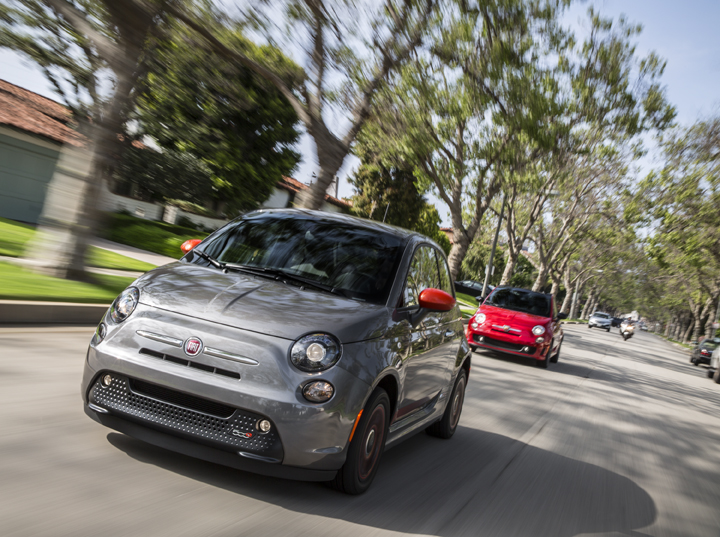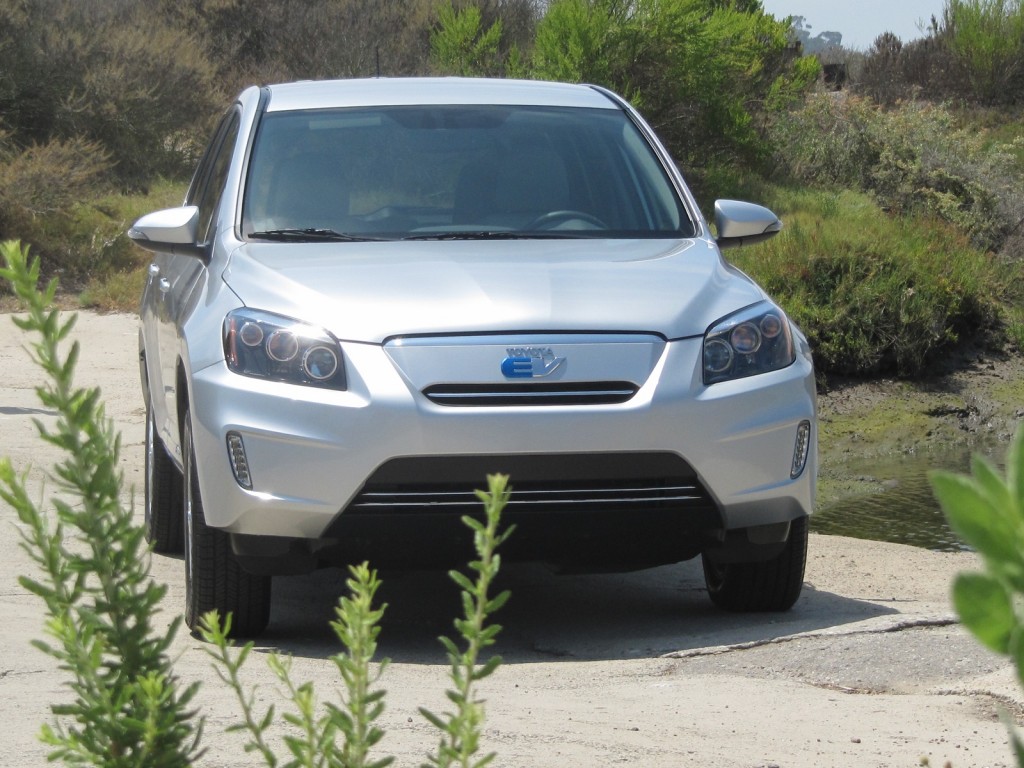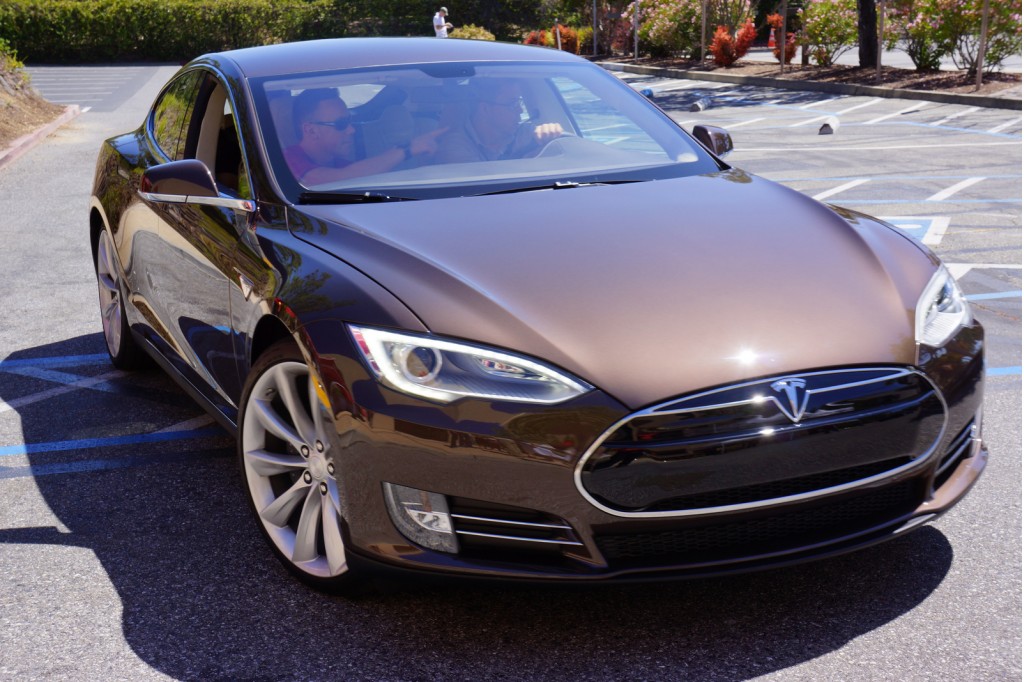
2014 Fiat 500e
There's reportedly been a long waiting list for these cars, with a $199/month lease deal and, yes, even some reports of markups.
Yet Fiat has sold only a few hundred of these sought-after machines.
Why? Because the automaker doesn't want to sell one more car than it has to.
The Fiat 500e is a vehicle that Fiat Chrysler didn't really want to make, one on which the automaker will likely lose $10,000 or more per vehicle. Yet it's one that the company plans to make for several more years--in tiny numbers.
That's because the Fiat 500e is no goodwill gesture for electric-car fans. It's a so-called 'compliance car,' required by California as part of a program to phase in tighter emissions standards (and better vehicle fuel efficiency).

Light-duty vehicle type scenario, now-2050 (California Air Resources Board)
Under the California Air Resources Board ZEV (zero-emission vehicle) credit program, electric-vehicle manufacturers get a credit for every plug-in vehicle they sell in California and eight other states. They can buy, sell, and trade those credits with other automakers.
In return, the six highest-selling automakers can offer their full vehicle lines in California, including those with very low fuel-economy ratings, without being hit with state fines.
Pay with plug-ins, to play with guzzlers
According to Scott Shepard, a research analyst at consulting firm Navigant Research, which has examined the market around such vehicles, the ZEV program is designed as a 'pay-to-play' approach.
“You produce enough vehicles that have a high-mpg rating, then you're able to play the game, and [sell] a lot of low-mileage vehicles, like SUVs and trucks,” said Shepard.
“And then you can make your money back on those higher-demand vehicles with low mileage."
For the regulations in place through 2017, only six automakers in California are required to comply.
After that, things get more interesting, with tighter requirements to be phased in each model year from 2018 through 2025--and applying to more makers as well.
Shepard argues that building low-volume compliance cars--not only the Fiat 500e, but also the Chevrolet Spark EV, Honda Fit EV, and Toyota RAV4 EV--has been good for the automakers.
The experience, he says, adds up to something better than what they might have learned with normal R&D or small, controlled test fleets of a few dozen cars.
“These are small-volume cars; they've been great testers, in terms of the manufacturers trying to figure out whether this is something they can actually do and profit from on a larger scale.”

Honda Fit EV electric car remote-control key fob showing battery state of charge
But the scale of these compliance cars thus far has been very small.
No compliance car has sold more than 1,100 vehicles over the course of a model year. Toyota plans to sell 2,600 RAV4 EVs over two years, while Honda's three-year total volume is only 1,100 Fit EVs.
When Honda lowered its lease price on the Fit EV to just $259 a month last summer, to address lagging deliveries, it moved 208 cars last June--and everyone took note. The move also triggered a round of price reductions through the summer.
Other makers haven't been as successful. Since September 2012, the Toyota RAV4 EV has thus far sold only about 60 percent of the announced total of 2,600.
"The RAV4 EV is an example of a vehicle that's priced way too high to satisfy the capacity that they want to put out,” said Shepard. "I think we'll see a drop in the lease price for the RAV4--or we'll just see Toyota abandon it.”
Small scale, small portion of the market
Currently compliance cars are a tiny portion of the battery-electric vehicle (BEV) market as a whole, with the Nissan Leaf and Tesla Model S making up the vast majority of the volume. The Honda Fit EV, Fiat 500e, and Toyota RAV4 altogether add up to just over 5 percent of the market.

2012 Toyota RAV4 EV, Newport Beach, California, July 2012
There are no doubt more compliance cars on the way; but don't get too attached to the current crop, because the list will be very different in a year or two—as well as fuzzier about what makes a compliance car and what doesn't.
Only Fiat has announced that its compliance model, the Fiat 500e, will be produced at the current low volumes for several more years.
"They are a temporary figment on the electric-vehicle landscape," said Shepard. And at this point, a lot of the questions have been answered—such as how the market would react to vehicles with low ranges, after perhaps transitioning from a hybrid with 500 miles of range.
In the not-too-distant future, he suggests, there won't be much space left in the market for such 'small wonder' efforts that color the balance sheet red.
Looking ahead: Pay Tesla, or build plug-ins that sell?
“The program requires more from automakers as it goes out in the future,” said Shepard. "You can't meet the requirements producing the number of vehicles that they [Honda and Fiat] are producing now."

Tesla Model S
"They're either going to have to bite the bullet and pay Tesla for credits, or they'll have to produce a vehicle, more on the economy side, that will satisfy that mandate."
It's debatable whether compliance cars take away sales from dedicated, for-profit electric models--like the Nissan Leaf.
And while their volume has been only a tiny ripple for the battery industry, positives of the scheme already include that it's helped drive the infrastructure and development of public charge points.
When the leases end, will today's electric-car drivers give back their compliance cars and trade into a plug-in car that's viable business for automakers? And have they convinced at least a few friends, neighbors, or coworkers to plug in as well?
Read on to see the four currently available models that we classify as compliance cars.
Then be sure to browse this full guide of all the other electric and plug-in-hybrid vehicles that are currently on sale.
2014 Fiat 500e
How far you can go: 87 miles (EPA)
How fast you can charge it: From empty to full in 4 hours on 240V
Price (may be eligible for tax credits): $31,800; $199/mo. lease
Where you can buy it: Only in California, only “at select FIAT Studios”
The buzz about it: It's the sportiest, best-driving electric car short of the Tesla Model S. Fiat could sell many more of these if it were widely available, but it's clearly a loss-leader with a true cost far above its sticker.
2014 Chevrolet Spark EV
How far you can go: 82 miles (EPA)
How fast you can charge it: 7 hours at 240V. DC Fast Charging is an option, but the SAE standard it uses are few and far between.
Price (may be eligible for tax credits):$27,495; lease deal currently advertised at $176/mo.
Where you can buy it: California and Oregon. GM has said they'll eventually make it available in more markets but has made no move yet to do so.
The buzz about it: The Spark EV isn't just the quickest of these small EV hatchbacks; it's also the most efficient vehicle on the market, according to the EPA, with a Combined MPGe (miles per gallon equivalent) rating of 119. And its range is an honest 82 miles if you take it easy—far more by some accounts.
2012 Honda Fit EV
How far you can go: 82 miles (EPA)
How fast you can charge it: 3 hours on 240V, or less than 15 hours on 110V
Price (may be eligible for tax credits):$36.625; lease deal currently advertised at $259/mo.
Where you can buy it: Oregon and California
The buzz about it: The Fit EV has an exceptionally smooth, well-integrated powertrain --although it sacrifices its Magic Seat rear seat-folding to pack in its batteries.
2012 Toyota RAV4 EV
How far you can go: 103 miles (EPA)
How fast you can charge it: Around 5 hours on 240V, up to 17 on 110V
Price (may be eligible for tax credits): $50,660; $299/mo. lease deal
Where you can buy it: California
The buzz about it: The relatively slow sales and lack of interest of the RAV4 EV is sort of a mystery—and even though there's a Tesla powertrain the driving experience hasn't been described as anything all that special. The price premium of more than $20,000 over a comparable gasoline RAV4 could be part of it. Otherwise it's the only SUV that's also an EV.
_________________________________________













